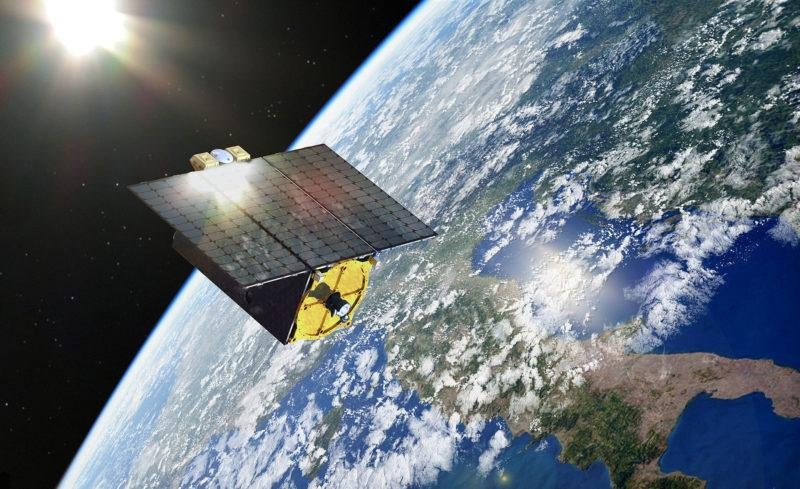Small Satellite Market Dynamics Shaped by Innovation in Payload Technologies and Launch Capabilities

The Small Satellite Market is undergoing a dynamic transformation, driven by two critical pillars: advancements in payload technologies and the rapid evolution of launch capabilities. These innovations are enabling unprecedented flexibility, cost-efficiency, and functional versatility, positioning small satellites as indispensable assets in modern space missions. As space becomes increasingly democratized, agile payload integration and tailored launch options are redefining the market's structure, value chain, and growth trajectory.
Payload Innovation as a Market Driver
The payload is the core functional component of any satellite, and in small satellites, its evolution has been particularly remarkable. Due to size and mass constraints, innovation has focused on maximizing utility per kilogram.
1. Miniaturized Sensors and Instruments
Recent advancements in electronics have led to ultra-compact yet high-performing sensors that support imaging, signal interception, environmental scanning, and scientific data collection. These innovations have enabled:
-
High-resolution cameras for Earth observation
-
Compact hyperspectral and multispectral imaging payloads
-
Radiation sensors for space weather monitoring
-
Atmospheric sensors for climate modeling
By reducing size without compromising performance, payloads now offer mission capabilities that once required large, expensive satellites.
2. Reconfigurable and Modular Payloads
Reconfigurable payloads allow satellite operators to update functions post-launch using software-defined architecture. This increases flexibility in:
-
Switching between imaging modes (optical to infrared)
-
Changing communication frequencies
-
Adapting missions for defense, disaster, or agriculture without new hardware
Such dynamic adaptability adds immense value to government and commercial clients seeking multi-purpose capabilities.
Launch Capabilities: From Bottleneck to Breakthrough
Launch costs and accessibility have long been constraints in satellite deployment. However, with the introduction of new launch vehicles and deployment models, these limitations are rapidly fading.
1. Dedicated Small Launch Vehicles
Companies like Rocket Lab, Astra, and Firefly Aerospace have developed lightweight launch systems specifically for small satellites. Their advantages include:
-
Shorter lead times and faster integration
-
Lower launch costs per mission
-
Custom orbits for individual or constellation satellites
These dedicated services have created more predictable and frequent launch windows, accelerating project timelines.
2. Ride-Sharing and Piggyback Launches
This model allows small satellites to share payload space on large rockets (e.g., SpaceX Falcon 9 or ISRO’s PSLV). Benefits include:
-
Economies of scale, significantly lowering launch costs
-
Access to mid- to high-Earth orbit missions
-
Support for global research, telecom, and environmental initiatives
Ride-share missions now account for over 50% of small satellite launches globally, democratizing access for startups and research institutions.
Integration of Launch and Payload Development
An emerging trend is the convergence of satellite and launch system development. This integrated approach reduces compatibility risks and speeds up readiness. Examples include:
-
End-to-end solutions by Rocket Lab (including satellite bus and launch)
-
Blue Canyon Technologies' platforms with tailored launch support
-
ISRO’s integration centers supporting both fabrication and deployment
This vertical integration ensures smoother handovers, cost efficiency, and higher mission success rates.
Market Impacts of Technological Innovation
Technological innovations in payload and launch systems have caused ripple effects across the Small Satellite Market, including:
-
Lower entry barriers: Startups and universities can now design, build, and launch satellites on modest budgets
-
Shorter development cycles: New payloads and small launchers allow rapid prototyping and deployment in under 12 months
-
Increased mission diversity: From crop analytics to real-time military surveillance, small satellites are serving wider sectors
-
Constellation feasibility: Lower costs make it viable to deploy satellite networks, providing global coverage for broadband and monitoring
This shift has also stimulated competition, encouraging players to offer more specialized, value-added services such as satellite-as-a-service (SataaS) and real-time analytics.
Supporting Infrastructure and Ground Systems
The evolution of payloads and launches is incomplete without the corresponding development of ground infrastructure. As constellations grow, they require:
-
Advanced ground stations for continuous satellite communication and control
-
Cloud-based mission control platforms for managing multiple satellites simultaneously
-
Automated data processing systems, particularly for remote sensing and telemetry
Companies like KSAT, Amazon Web Services (AWS), and Microsoft Azure have become critical partners in managing the downstream complexity of modern satellite missions.
Regulatory and Environmental Considerations
With dynamic growth comes the need for responsible practices:
-
Orbital debris management is now integral to satellite design and de-orbit planning
-
Spectrum regulation must evolve to accommodate rising traffic from high-density constellations
-
Sustainable launch protocols, including reusable boosters and eco-friendly propellants, are gaining priority
As payloads become more powerful and launches more frequent, international cooperation and standards will play a crucial role in ensuring market sustainability.
Conclusion: Toward a High-Velocity Ecosystem
Innovation in payload technologies and launch systems is reshaping the dynamics of the Small Satellite Market, unlocking new business models and accelerating global accessibility. As this fast-evolving ecosystem continues to grow, the next major shift will focus on Small Satellite Market Scenario, where defense, navigation, and commercial data services intersect to shape the next wave of deployment priorities and policy evolution.





